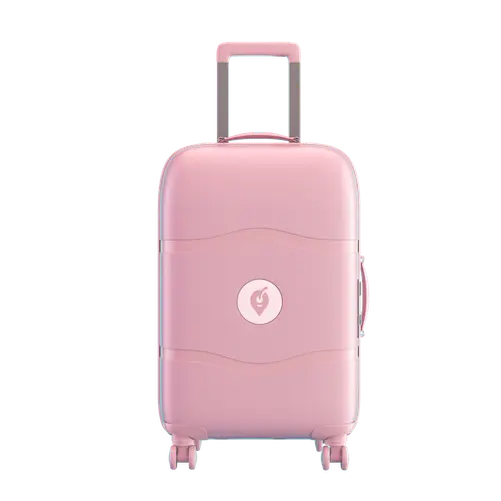Is Rio Safe for Female Travelers?

"Is Rio safe for female travelers?" This is a common question among women planning a journey to the vibrant city of Rio de Janeiro. The reassuring answer is that, with proper knowledge and precautions, it certainly is!
This guide is designed to walk you through the essential safety tips for traveling to Rio, particularly for solo female travelers, and how to stay safe while traveling to Rio. Basically, everything to ensure your Brazilian adventure is not just exciting but also secure.
When visiting Rio's beautiful beaches, such as Copacabana and Ipanema, soaking up the sun and enjoying the sea are definite highlights. However, it's crucial to use common sense and stay alert to your surroundings. Keep a watchful eye on your belongings and avoid leaving them unattended, as these popular beaches, while beautiful, can also attract opportunists.
The allure of Rio extends beyond its beaches. From the awe-inspiring vistas atop Sugarloaf Mountain to the dynamic and lively streets of Zona Sul, the city offers many sensory experiences. As you immerse yourself in these captivating environments, maintaining vigilance is key. Staying mindful of your personal safety and belongings allows you to fully embrace and enjoy the diverse and vibrant offerings of Rio de Janeiro, making your visit both enjoyable and memorable.
For a hassle-free exploration of Rio, consider using luggage storage in Rio de Janeiro. It's perfect for storing your bags safely while you enjoy the city unencumbered. This service is particularly useful for travelers who arrive in the city hours before their accommodation check-in time or have a late flight after checking out. Instead of carrying your luggage, you can store it securely with Nannybag, which offers a network of trusted local shops and hotels where you can leave your bags.
Safe Neighborhoods of Rio
Exploring the safe neighborhoods of Rio is an essential part of experiencing the city's charm and vibrancy, particularly in the renowned Zona Sul (South Zone). This area, encompassing picturesque and popular neighborhoods like Ipanema, Copacabana, Leblon, and Botafogo, is celebrated for providing a secure environment that appeals to both tourists and locals. These neighborhoods stand out for their safety, especially at night, making them ideal for accommodation and leisure. The streets here are lively and welcoming, lined with cafes and shops that offer visitors a comfortable and engaging experience.
However, it's crucial to remember that Rio is a sprawling metropolis, home to over 6 million people. As in any major city, staying street-smart is key. Visitors are advised to remain aware of their surroundings, take standard precautions like avoiding the open display of expensive items, be cautious with personal belongings in crowded areas, and plan safe ways to return to hotels or accommodations at night.
Choosing to stay in these safer neighborhoods allows visitors to explore the best of Rio with peace of mind. Whether it's enjoying the sun-kissed beaches, savoring the local cuisine, or meandering through the vibrant streets, Zona Sul's neighborhoods offer a secure and welcoming atmosphere. This ensures that visitors can fully immerse themselves in the rich cultural and scenic beauty of Rio de Janeiro while feeling safe and at ease.

Areas to Avoid in Rio de Janeiro
When planning travel to Rio de Janeiro, especially as a woman or anyone unfamiliar with travel in Brazil, it's essential to be aware of certain areas best avoided to ensure safety. One significant recommendation is to avoid visiting the favelas, especially those in Zona Norte. While guided tours to these areas are available, it's important to understand that your safety cannot be guaranteed in these communities, neither by tour operators nor by local law enforcement.
The favelas, marked by complex socio-economic challenges, can pose unpredictable and potentially risky situations for tourists. This is particularly pertinent for female travelers, who might face additional safety concerns. Understanding the nuances of crime in Rio and being aware of which areas to avoid is a crucial part of planning your journey.
For a safer and more enjoyable experience, exploring other parts of Rio is advisable. Many areas in the city offer robust safety measures and are equipped with tourist-friendly amenities. By choosing to visit these parts of the city, travelers, including women traveling solo or in groups, can enjoy a more secure environment.
Navigating the City
Public Transportation
Using Rio's public transportation system can be a practical option for getting around the city. For female travelers, especially, staying vigilant while using these services is crucial. Buses in Rio, while convenient, are not always the safest option, particularly for solo female travelers or those new to the city.
If you use the bus, remember your surroundings and store your cell phone and credit cards securely. The cable car to visit the iconic Christ the Redeemer is a safer and unique travel experience, offering transport and spectacular city views.
Radio Taxis for Safe Travel
For a safer and more reliable option, consider using radio taxis. These are preferable to hailing cabs off the street, particularly when traveling late at night or if your bus journey is unexpectedly interrupted. Radio taxis are generally well-regulated, offering a secure way to navigate the city.
Navigating the Streets at Night
Traveling to Rio as a woman requires extra caution, especially when moving around at night. Solo female travelers should avoid walking alone in less populated or dimly lit areas. It's advisable to stay within well-lit, busy streets, particularly in safer zones like Zona Sul, which includes popular and well-frequented areas such as Copacabana and Ipanema beaches. These neighborhoods are safer and offer vibrant nightlife and stunning beachside views, making them ideal for enjoyable and secure evening outings.

Solo Travel in Rio
Solo Female Travelers
Rio de Janeiro offers a wealth of experiences for solo female travelers, blending vibrant culture with breathtaking scenery. To fully embrace what Rio has to offer, it's important to stay informed and cautious. Always inform someone—be it a hotel staff member, a friend, or family—of your daily plans and expected return time. This ensures that someone knows your whereabouts and can raise an alarm if needed.
Choosing Safe Accommodations
Selecting the right place to stay is crucial. Opt for accommodations in well-known, safer neighborhoods such as Ipanema, Copacabana, or Leblon. These areas are tourist-friendly and have better security measures in place. Check reviews and choose lodgings that have good safety ratings and amenities.
Staying in Well-Lit Areas
Stick to well-lit and populated areas during your explorations, especially at night. Avoid isolated or poorly lit streets and pathways. When enjoying Rio's nightlife, staying in areas known to be safer and more welcoming to tourists is advisable.
Planning and Precautions
Planning is key to a safe solo trip. Map out your routes in advance, and be aware of the transportation options available, including the areas where it’s safe to use public transport. Keep a map or a GPS-enabled device handy to avoid getting lost.
Avoiding Risky Situations
Stay alert and trust your instincts. If a situation or an area feels unsafe, leave immediately. Avoid wearing flashy jewelry or displaying expensive gadgets in public spaces to avoid attracting unwanted attention.

Safety Tips
Vigilance in Public Spaces
Remaining alert and attentive is crucial in Rio, particularly in crowded tourist areas like Sugarloaf Mountain or the bustling beaches. It’s easy to get distracted by the stunning views of your devices, but this can make you more vulnerable to theft or pickpocketing. Keep your phone or map usage discreet, and always be aware of who is around you.
Situational Awareness
Pay attention to the behavior of people around you. If you notice someone acting suspiciously or following you, move to a safer, more populated area. Be particularly cautious in crowded public transport or busy marketplaces, where close contact with others is unavoidable.

Say hello to exploring and goodbye to heavy bags!
What if you could enjoy every minute in the city without the burden of your bags?
- Safe luggage storage for a flat daily price of R$24.00/luggage item
- Included luggage protection of up to €10000 in case of breakage, loss or theft
